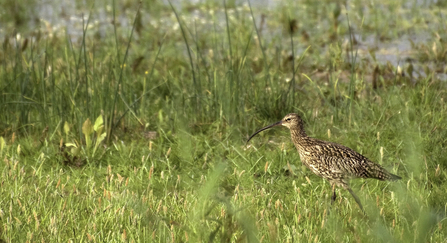The project will see new wetland created at Oak Tree Farm in the Lugg Valley in Herefordshire which will provide food and nesting habitat for threatened lapwing and curlew. The location means the reserve will also be a stepping stone for wetland wildlife between Bodenham Lake nature reserve and Wellington Gravel Pits, two of the most important county sites for wetland birds and will improve connectivity between a wetland complex of more than 20 lakes alongside the A49.
Sustainable, natural drainage created next to an A49 outfall, will aid water filtration running from the nearby road network, reducing pollution before the water enters the River Lugg SSSI.
Oak Tree Farm is a 30-acre site comprised of pasture and meadow. It lies directly below Dinmore Hill and slopes down to the River Lugg which forms its southern border. In the winter, an ephemeral pool emerges beside the river and there is also a natural spring on the land. These are all great features for wildlife and mean that the site is perfect for further enhancement.
Herefordshire Wildlife Trust purchased the site in September 2020 following a successful fundraising appeal.

